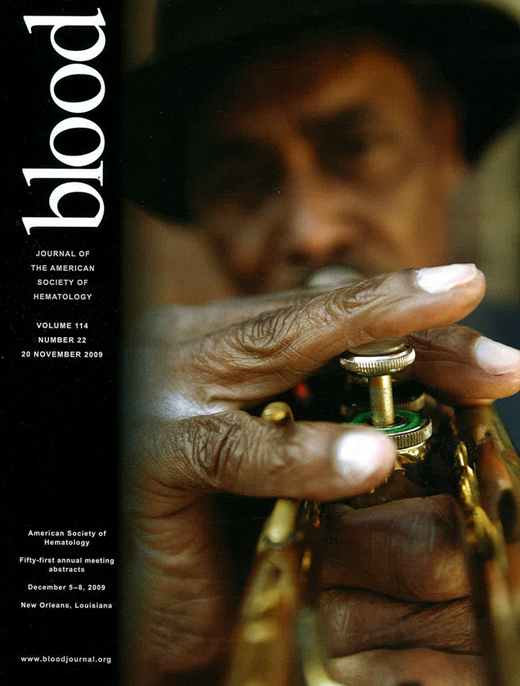Abstract
Abstract 2251
Poster Board II-228
Dendritic cells (DC) are central to the development of acute graft-versus-host disease (GvHD) following allogeneic hematopoietic cell transplantation (alloHCT). We previously showed that the activation status, as assessed by CMRF-44 antigen expression, of blood CD11c+ myeloid DC is highly associated with the severity of acute GvHD, and that activated DC may be detected in the circulation prior to clinical presentation of GvHD (Transplantation 2007;83: 839–846). Because DC migration is tightly regulated by the interaction between chemokine receptors on DC and their ligands, we investigated the relationship between the severity of acute GvHD and the expression of the chemokine receptors CCR5 and CCR7 on CD11c+myeloid and CD11c- plasmacytoid from the peripheral blood of 32 patients post alloHCT.
Peripheral blood was collected twice weekly up to day 100 post transplant from 22 patients who received transplants from matched siblings, 10 from unrelated donors. Nineteen transplants were performed with myeloablative conditioning, 13 with reduced intensity conditioning. The expression of each chemokine receptor on CD11c+ and CD11c- DC was calculated using multiparameter flow cytometry. The percentage of CD11c+ DC expressing a given receptor was added to the percentage of CD11c- DC expressing the same receptor to give a maximum score that could vary from 0 to 200%.
Eleven of 32 patients developed moderate to severe acute GvHD (grade II-IV), the remaining 21 patients developed either no GvHD or only grade I GvHD. The percentage of DC expressing either CCR5 or CCR7 was correlated with the development of acute GvHD. CCR7 expression was detected in 13 of 32 patients post-HCT with a median of 2.3% of DC positive (range 0 to 39%). CCR7 expression on DC showed no association with the severity of acute GvHD (p=1.0). In contrast, higher CCR5 expression was detected on DC in patients developing grade II-IV GvHD (median 98.0%, SEM 9.1%) than in those with grade 0-I GvHD (median 5.2%, SEM 5.1%) p<0.0001. All eleven patients with grade II-IV GvHD expressed CCR5 at a level of >35% of myeloid and plasmacytoid DC. Only two of 21 patients with grade I GvHD expressed CCR5 at the same level (66% and 94%). Most importantly, the expression of CCR5 preceded the development of moderate to severe GvHD in all patients by a median of 19 days (range 2 to 47 days, SEM 4.3 days). Using a receiver operator curve analysis, CCR5 expression above 35% demonstrated a sensitivity of 100% and a specificity of 90.5% for predicting grade II-IV GvHD.
Expression of CCR5 on circulating DC post allo-HCT predicts for the development of moderate to severe GvHD, and detection could allow earlier therapeutic intervention prior to the development of clinical GVHD, if these findings are confirmed in a larger study
No relevant conflicts of interest to declare.
Author notes
Asterisk with author names denotes non-ASH members.

